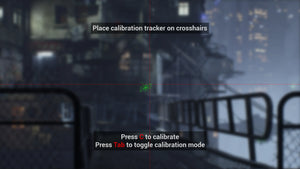Is Full Dive VR Possible? Progress & Future Predictions

The idea of full dive virtual reality has fascinated millions ever since the release of science fiction works like Sword Art Online and Ready Player One. The concept suggests a future where users can fully disconnect from their physical bodies and immerse themselves in a digital universe where every sense, movement, and emotion is replicated flawlessly. Unlike the VR headsets we know today, full dive VR would bypass screens and controllers entirely. Instead, it would rely on a direct interface between the human brain and digital systems.
But the real question is this: is full dive VR possible?, and if so, how close are we to full dive VR?
To answer this, we need to carefully examine the current state of VR technology, progress in brain-computer interfaces, the role of companies leading the research, and the scientific challenges that must be overcome. As of 2025, no company has achieved full dive VR in the sense imagined in popular culture, but major breakthroughs in neuroscience, neuroprosthetics, and immersive design are paving the way for a future where it could become a reality.
How Far Away Is Full Dive VR?
The VR systems we use today — such as the Meta Quest 3, Apple Vision Pro, and PlayStation VR2 — are light-years ahead of the clunky headsets of the early 2010s. They deliver photorealistic visuals, spatial audio, and even basic haptic feedback. However, they still rely on external hardware and remain limited to the senses of sight and sound.
Full dive VR, on the other hand, requires a complete sensory and cognitive integration. This means translating brain signals into digital actions while simultaneously feeding digital sensations back into the brain. In essence, the brain must be “tricked” into believing the virtual world is as real as the physical one.
So how far away is this? Realistically, experts suggest it could take several decades before we reach anything resembling true full dive VR. Progress in 2025 shows us small but important steps. Neural interface devices are already being tested, but they remain primitive compared to what would be required for full sensory immersion. A safe, consumer-ready system is not expected any time soon, but research continues to accelerate due to both gaming and medical applications.
Is Full Dive VR Scientifically Possible?
From a scientific perspective, full dive VR is possible in theory. The human brain communicates through electrical signals, and technology that can interpret or stimulate these signals already exists in medical science. For example:
-
Neuroprosthetics allow people with paralysis to control robotic arms or computer cursors using brain signals.
-
Cochlear implants restore hearing by directly stimulating auditory nerves.
-
Deep brain stimulation has been used to treat conditions like Parkinson’s disease.
These are clear demonstrations that the brain can interact with machines and vice versa. Extending this interaction into a two-way, fully immersive digital system is where the challenge lies.
One of the biggest hurdles is complexity. The brain contains around 86 billion neurons, and full dive VR would require precise control over huge networks of them to recreate sight, touch, taste, smell, and motion. Another challenge is safety. Invasive implants like those being tested by Neuralink carry risks of infection, scarring, and long-term neurological damage. Non-invasive approaches, such as EEG headbands, are safer but far less precise. So while science does not rule it out, the practical path forward requires decades of careful experimentation, ethical oversight, and technological evolution.

Full Dive VR Research and Progress
The journey toward full dive VR is being shaped by multiple fields of research, each addressing a piece of the puzzle.
Brain-Computer Interfaces (BCIs)
BCIs are the foundation of any full dive system. They aim to record brain signals and translate them into computer commands, or vice versa. Companies like Neuralink, Paradromics, and Kernel are experimenting with implants that could eventually make this possible. Current BCIs allow limited control, such as moving a cursor or playing a basic video game with thought alone.
Haptic Feedback and Sensory Simulation
Another crucial aspect of full dive VR is recreating physical sensations. Startups and research labs are working on haptic gloves, full-body suits, and even electrical stimulation systems that mimic sensations like touch, pressure, and temperature. For example, certain experimental suits can make players feel the impact of in-game hits or the sensation of rain.
Visual and Auditory Immersion
We’ve already made significant progress here. VR headsets now deliver near-photorealistic graphics and spatial 3D audio that can fool the brain into feeling “present” in another world. However, bypassing the eyes and ears entirely — as full dive VR would require — is still science fiction. For now, headsets remain the most practical option.
Beta Testing and Early Experiments
Some experimental trials can be loosely described as “full dive VR beta testing.” For instance, patients with locked-in syndrome have been able to type or communicate using neural implants, effectively “diving” into a digital environment with their thoughts. While these aren’t gaming applications, they represent early stages of what future immersive systems could achieve.
In summary, full dive VR research is real, but progress is gradual and scattered across fields like neuroscience, robotics, and computing. No single project has yet managed to combine them into a cohesive, consumer-ready system.
Companies Working on Full Dive VR
Several companies and research institutions are shaping the landscape of immersive VR and brain-computer technologies.
-
Neuralink (Elon Musk’s venture): Perhaps the most high-profile name in neural tech, Neuralink is developing implantable chips that allow direct communication with the brain. While primarily intended for medical uses, the company often hints at future applications in VR and gaming.
-
Meta (formerly Facebook): Meta continues to invest billions into the Reality Labs division, focusing on high-end VR hardware, avatars, and haptic technologies. Their long-term vision is a “metaverse” that could eventually overlap with full dive VR concepts.
-
Sony Interactive Entertainment: Known for innovations in gaming hardware, Sony has advanced VR with PSVR2 and is researching biofeedback systems that could deepen immersion.
-
OpenBCI: A startup developing open-source tools for brain-computer interfacing, with a focus on non-invasive systems like EEG headbands. These may not yet provide the precision required for full dive VR but are far safer.
-
Kernel & Paradromics: Both companies are pushing boundaries in neuroscience, particularly in decoding brain signals at scale.
Though none of these companies are close to delivering a commercial full dive VR product, their combined efforts are pushing the boundaries of what’s possible. Each breakthrough in brain-computer interfacing, haptic simulation, or immersive design brings us closer to answering the question: is full dive VR possible?
When Will Full Dive VR Be Possible?
Predicting the timeline for full dive VR is tricky because the technology involves so many moving parts: neuroscience, robotics, software, ethics, and safety. Some optimistic experts suggest partial neural VR experiences may appear by the 2030s, but true full dive VR — the kind where every sense is engaged, and users can live inside a digital world — could easily take several more decades.
The main bottlenecks are safety, affordability, and complexity. Even if we develop a working prototype within the next 20 years, mass adoption will require making the system non-invasive, reliable, and accessible for ordinary consumers. History shows us that new technologies often take decades to move from lab experiments to everyday products.
The Role of Neuralink and Similar Companies
A frequent question is whether Neuralink will make full dive VR possible. While Neuralink’s current focus is on treating neurological disorders — such as helping paralyzed patients control devices — the same technology could one day enable immersive experiences.
Neuralink’s brain implant chips demonstrate the potential of two-way brain communication. If perfected, they could allow not just thought-based input, but also digital-to-brain output — a key step for sensory immersion. However, these implants are highly experimental, invasive, and controversial. At best, they represent the first stepping stones toward a future where the lines between physical and digital realities blur.
Other companies like Paradromics, Kernel, and OpenBCI are pursuing safer, non-invasive methods. While less precise than Neuralink’s implants, these approaches may ultimately be more practical for consumer adoption.
Is Full Dive VR the Same as Ready Player One or Sword Art Online?
Cultural references often shape how people imagine full dive VR. In Sword Art Online (SAO), players use a device called NerveGear to completely immerse themselves in a game, with their consciousness existing only in the virtual world. Ready Player One portrays a similar concept through the OASIS, a vast digital universe accessed by VR gear.
While inspiring, these depictions oversimplify the science. A real-world equivalent would require thousands of micro-level interactions between neurons and machines. Unlike fiction, we cannot simply “flip a switch” to shut down the body and live inside VR. Furthermore, ethical and safety concerns make the SAO concept — where players can die in-game — entirely unrealistic and dangerous.
Still, these works serve as important thought experiments, motivating researchers and gamers to dream about what the future could hold.

Full Dive VR Progress by 2025
As of 2025, progress is tangible but limited. Here’s what we’ve achieved:
-
VR headsets are more immersive than ever, offering photorealistic visuals and realistic soundscapes.
-
Haptic suits and gloves allow users to feel textures, resistance, and even basic sensations like warmth or cold.
-
Early-stage BCIs can translate thought patterns into simple commands.
-
Medical research shows that the brain can adapt to signals from machines, a principle vital for full dive VR.
However, we are still far from merging all these breakthroughs into a seamless, affordable system. The current stage is best described as proto-VR research, where each component is being developed independently.
FAQ Section
Q1. How far away is full dive VR?
Realistically, full dive VR may still be several decades away. While small-scale experiments exist in 2025, consumer-ready technology requires major breakthroughs in brain-computer interfaces and safety.
Q2. Is full dive VR scientifically possible?
Yes, in theory. The brain communicates through electrical signals, and science has already shown it is possible to stimulate or interpret them. However, scaling this to full immersion is a huge challenge.
Q3. Is there full dive VR right now?
No. Current VR headsets only simulate vision and sound. Full dive VR — where all senses and actions are integrated — does not yet exist.
Q4. Does NerveGear exist?
No, NerveGear is fictional. While inspired by real research, no headset or implant can yet place a person into a fully immersive virtual world.
Q5. Will Neuralink make full dive VR possible?
Neuralink could play an important role, as it develops brain implants capable of reading and sending neural signals. However, the technology is still experimental and far from consumer-ready.
Q6. Will fully immersive VR ever exist?
Many scientists believe it will, but it may take 30–50 years before we see practical versions. Advances in neuroscience, AI, and robotics will all contribute.
Q7. Will VR like SAO ever be possible?
Technically, some aspects could be possible in the distant future. However, shutting down the body and transferring full consciousness into VR, as in SAO, raises serious safety and ethical concerns.
Q8. What is the biggest VR game right now?
As of 2025, popular VR games include Half-Life: Alyx, Beat Saber, and expanding metaverse-style platforms like VRChat. While not “full dive,” they are leading immersive experiences.
Q9. What is the best VR headset in 2025?
Top contenders include the Meta Quest 3, PlayStation VR2, and Apple Vision Pro, depending on whether you value affordability, gaming ecosystem, or cutting-edge display technology.
Q10. When will full dive VR be possible?
No official timeline exists, but research suggests we may see experimental consumer systems in a few decades. Full-scale adoption could take even longer.
Q11. Is full dive VR the same as Ready Player One?
Not exactly. Ready Player One imagines a vast, highly social digital world. Real-world VR may resemble it in terms of scale and social interaction, but achieving the same level of realism requires breakthroughs in sensory integration.
Q12. Full dive VR beta testing — does it exist?
There are no official gaming beta tests for full dive VR. However, medical and neuroscience experiments, such as brain-controlled cursors or prosthetics, can be considered very early forms of “beta testing” for neural VR.
Challenges Blocking Full Dive VR
Even with optimism, it’s important to acknowledge the obstacles:
-
Neuroscience limitations: We don’t yet understand the brain in enough detail to map every sensory pathway.
-
Ethical concerns: Brain implants raise questions about privacy, safety, and consent.
-
Hardware limitations: Current processors and AI systems are not powerful enough to simulate entire worlds at the neural level.
-
Cost barriers: Early systems will likely be prohibitively expensive before scaling to the masses.
These barriers don’t mean full dive VR is impossible — only that patience and continued research are required.

The Future of VR Beyond 2025
If full dive VR is the long-term dream, the near-term future of VR still holds exciting possibilities. By the early 2030s, we may see:
-
Hybrid neural systems where thought-based commands replace controllers.
-
Advanced haptics offering near-realistic touch sensations.
-
More powerful metaverse platforms where millions can interact simultaneously.
-
Medical crossovers where VR assists with rehabilitation, therapy, and prosthetic training.
In other words, even without full dive VR, the next decade of virtual reality will feel revolutionary compared to today.
Conclusion
So, is full dive VR possible? The answer is yes — in theory. The science of brain-computer interfaces, haptic technology, and immersive design shows us that it can one day be achieved. But in practice, it remains far from reality. As of 2025, VR is progressing faster than ever, yet true full dive systems are still decades away.
While we may not be diving into a Sword Art Online-style universe anytime soon, the progress being made is undeniable. Companies like Neuralink, Meta, and Sony are inching us closer, step by step. For now, gamers and futurists will need to be content with high-resolution VR headsets, immersive haptic suits, and a glimpse of what the future holds.
The dream of full dive VR is alive, and while the timeline is uncertain, the direction is clear. One day, perhaps within our lifetimes, the answer to “is full dive VR possible?” may no longer be a question — but a reality.




